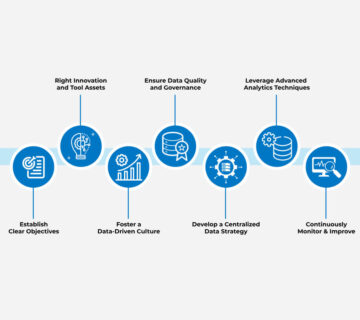Cybersecurity Insurance In Southern California
What do you know about cybersecurity insurance? Do you know whether you need it? Is it included in your general coverage? If not, can improved cybersecurity qualify you for coverage or even lower premiums?
The cybercrime landscape is getting more unpredictable and complex every day. Cybercriminals are finding more effective ways to infiltrate business networks and steal critical business data—but you already know all this.
There’s not much point in the “doom and gloom” cybercrime discussion anymore, because it’s so common and well understood. The fact is, the global cybercrime industry is booming—by the end of last year, it was estimated that cybercrime caused up to $6 billion in damages alone.
Cybersecurity insurance is a relatively new type of protection designed specifically to help cover the potentially massive expenses associated with an unavoidable data breach. It can be a worthwhile investment, so long as you know how it works.
The somewhat inevitable nature of modern cybercrime has led businesses to consider cybersecurity insurance as a final layer of reassuring protection. In fact, it’s becoming more and more necessary, as many insurance providers have begun drawing a clear line between normally covered losses, and those incurred by cybercrime-related events.
That means that if your cybersecurity doesn’t meet the standards of your insurance provider, you may not be as well covered as you think.
What Is Cybersecurity Insurance?
Often referred to as cyber liability or data breach liability insurance, cybersecurity insurance is a type of stand-alone coverage. It’s designed to help businesses cover the recovery costs associated with any kind of cybersecurity incident including:
- Breach And Event Response Coverage: A very general and high-level form of coverage, this covers a range of costs likely to be incurred in the fallout of a cybercrime event, such as forensic and investigative services; breach notification services (which could include legal fees, call center, mailing of materials, etc.); identity and fraud monitoring expenses; public relations and event management.
- Regulatory Coverage: Given that a range of organizations (such as The Securities and Exchange Commission, the Federal Trade Commission, the Department of Homeland Security, and more) have a hand in regulating aspects of cyber risk in specific industries, there are usually costs that come with defending an action by regulators This covers the costs associated with insufficient security or “human error” that may have led to a privacy breach. Examples may include an employee losing a laptop or e-mailing a sensitive document to the wrong person.
- Liability Coverage: This type of coverage protects the policyholder and any insured individuals from the risks of liabilities that are a result of lawsuits or similar claims. Put simply, if you’re sued for claims that come within the coverage of the insurance policy, then this type of coverage will protect you.
- Cyber Extortion: This type of cybercrime event is generally a form of a ransomware attack, in which a cybercriminal keeps encrypted data inaccessible (or, alternatively, threatens to expose sensitive data) unless a ransom is paid. Coverage of this type addresses the costs of consultants and ransoms, including cryptocurrencies, for threats related to interrupting systems and releasing private information.
Does Cybersecurity Insurance Offer Complete Protection Against Cybercrime?
A common misconception is that a cybersecurity insurance policy is a catch-all safety net, but that’s simply not the reality. Without a comprehensive cybersecurity strategy in place, a business may not qualify for a policy in the first place. Furthermore, in the event of a hack, a business may not qualify for full coverage if their cybersecurity standards have lapsed, or if they can be found to be responsible for the incident (whether due to negligence or otherwise).
The core issue is that as cybercrime becomes more common and more damaging, insurers will become more aggressive in finding ways to deny coverage. It’s in the interest of their business to pay out as little as rarely as possible, which means the policies will tend to rely on a series of complicated clauses and requirements that covered parties have to comply with.
A key example of this is when Mondelez International was denied coverage for the $100 million of damage they incurred from the NotPetya attack. Their insurer, Zurich Insurance, cited the obscure “war exclusion” clause, claiming that Mondelez was a victim of a cyberwar.
This is not an isolated incident. As discovered by Mactavish, the cybersecurity insurance market is plagued with issues concerning actual coverage for cybercrime events:
- Coverage is limited to attacks and fails to address human error
- Claims are limited to losses that result directly from network interruption, and not the entire period of business disruption
- Claims related to third-party contractors and outsourced service providers are almost always denied
All this goes to show why business owners need to look carefully at the fine print of their cybersecurity insurance policy and ensure their cybersecurity standards are up to par. No one should assume they’re covered in the event of a cybercrime attack — after all, for every $1 million paid in premiums, insurance companies only pay out $320,000 in claims.
Do You Actually Need Cybersecurity Insurance?
You may not be required by the law to have cybersecurity insurance. However, certain compliance regulations, depending on the industry, do recommend it. Cybersecurity insurance policies are offered by a variety of insurers and policy prices and exclusions vary widely among different providers.
Odds are, it’s more likely you’ll need cybersecurity insurance in one form or another at some point, which is why it’s wiser to invest now. At the very least, you should get a quote on a policy so you can make a properly informed decision.
Cybersecurity Choices Affect Cybersecurity Insurance Coverage
It’s important to understand that the way you manage your cybersecurity can directly affect the coverage and premiums you qualify for. The more robust your cybersecurity posture is, the better you’ll do with carriers. Your investment can potentially return on lower insurance expenses.
For example, we provide clients with support via CrowdStrike Overwatch, an industry-leading cybersecurity management platform that ensures a team is monitoring for security events 24/7. This type of protection goes a long way in showing carriers that you’ve invested properly in your defenses.
Furthermore, if you sign up for CrowdStrike Complete, you’ll get $100,000 of coverage (backed by AIG) directly from CrowdStrike. That means, in the event of a breach, you’ll automatically get $100,000 to help cover the damages.
Don’t Overlook Proactive Cybersecurity Protection
As important as cybersecurity insurance is, don’t forget that it’s simply one part of an effective cybersecurity defense. You also need to protect your organization proactively.
Technijian can help. Our team provides cybersecurity and technology services for organizations like yours—we are available to help you develop a robust cybersecurity defense, minimizing the chance that you’ll ever have to make a claim on your cybersecurity insurance.
You can start improving your cybersecurity and get the insurance policy you need by getting in touch with the Technijian team.





No comment